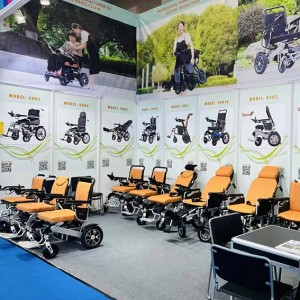4 Common Questions and Key Suggestions for Power Wheelchairs
With advancements in the medical field and the continual rise in living standards, wheelchairs have become indispensable for many elderly and disabled individuals. Both power and manual wheelchairs have evolved significantly, and today’s wheelchair industry boasts high levels of innovation. Given their critical role in mobility, safety and reliability are top priorities for power wheelchairs. Here are some frequently asked questions and suggestions to ensure optimal performance and safety.
Avoid Driving While Charging
Driving a power wheelchair while it is charging can be hazardous. If the wheelchair is accidentally moved during the charging process, the power cord may be pulled, leading to disconnection, breakage, or even the risk of electric shock from exposed wires. This issue has been frequently identified during inspections and testing.
Recommendation: Manufacturers should program the wheelchair’s controller to disable driving during charging. If the power wheelchair features multiple charging connectors, both connectors should be configured to ensure that driving is disabled while the device is charging.
Motor Stall Protection
When a power wheelchair encounters an obstacle, the drive motor may stall. If the motor is unable to move and continues to receive a high current, it can overheat. Prolonged overheating can cause irreversible damage to the motor or pose serious safety risks to the user. A common problem found during testing is the absence of an over-current protection device, which can lead to overheating.
Suggestion: It is crucial for manufacturers to equip power wheelchairs with over-current protection devices. These devices should be installed on the controller or battery’s external circuit, automatically cutting the power supply if an excessive current is detected. This measure helps safeguard the motor and ensures user safety.
Impact Strength
Power wheelchairs are subjected to sudden impacts from various directions during use. The impact strength test evaluates how well different parts of the wheelchair can withstand these forces. This test involves applying controlled impact forces, similar to the effect of obstacles on the wheelchair’s casters, hand rings, footrests, and the backrest when a user is seated.
Common Issues: The most frequent problems identified include loosening or deforming of the casters and damage to the footrests.
Solution: Manufacturers should prioritize selecting high-quality, impact-resistant materials for casters and footrests. Strengthening these components will enhance durability and safety.
Double Roll Fatigue Strength
The double roll fatigue test simulates the repeated shocks a power wheelchair experiences, typically conducted by subjecting the chair to 200,000 cycles of simulated bumps under maximum safe load conditions. The most common failure point during these tests is the deformation or breakage of the crossbar, a critical load-bearing component. If the crossbar’s thickness is insufficient, it may fracture under repeated stress.
Recommendation: Manufacturers should consider using crossbars made from thicker, more robust materials to enhance load-bearing capacity. Reinforcing this essential structure will reduce the risk of fractures, especially in high-stress environments.
Post time: Nov-11-2024


